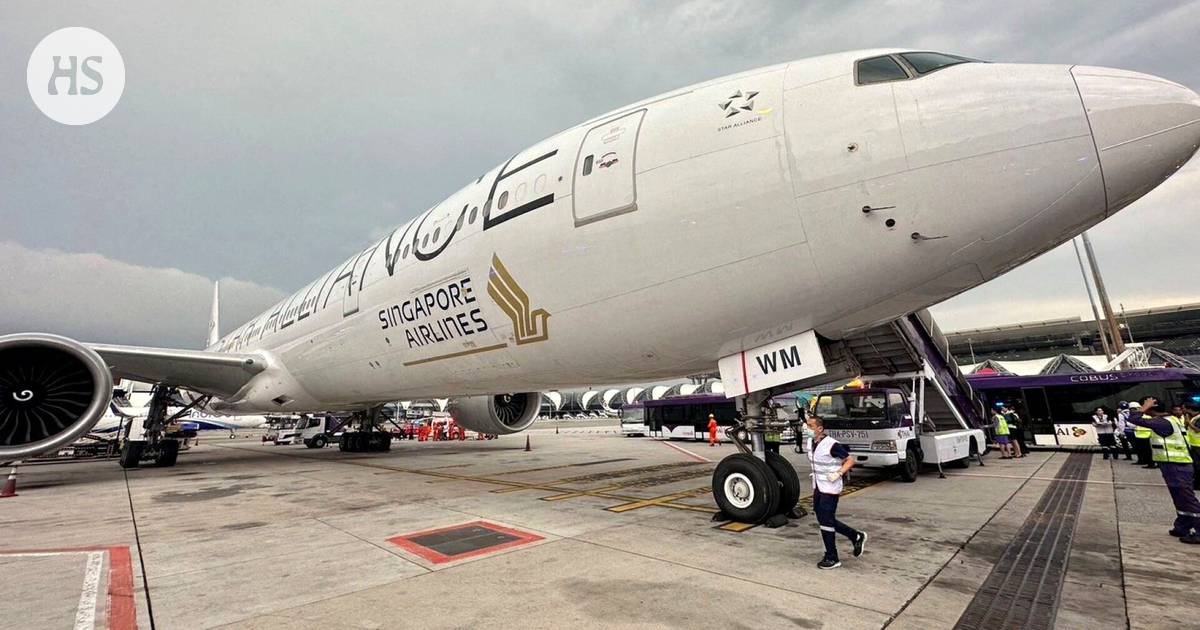Lentoliikenne|The mechanical engineering research manager says that air currents can be detected near airports, but not yet from the planes.
Singapore Airlines’ scheduled flight encountered strong turbulence on Tuesday, as a result of which one passenger died and dozens were injured.
Such serious cases are really rare, states the head of mechanical engineering research at the University of Tampere Jussi Aaltonen.
The quality of the turbulence encountered by the accident plane has not been made public. Because of the suddenness, it has been speculated to be clear air without turbulence. Such turbulence cannot be detected in advance.
“It can’t be seen from the airplane’s weather radar,” Aaltonen says.
The plane the radar can detect turbulence if there are water droplets, ice crystals or dust in the air. However, these are not present in clear air turbulence.
According to Aaltonen, airports have equipment that can detect vertical air currents. However, the weather radars on the fields cannot be transferred to airplanes.
“The equipment is not about a single sensor but a sensor network, and it is not possible to install it on the machine,” says Aaltonen.
Aircraft weather radars cannot detect all turbulence. The picture shows an Air Berlin plane near Düsseldorf Airport in July 2017.
Bright air turbulence is created when air masses moving in different directions or moving at different speeds meet each other and mix.
Professor at the Center for Atmospheric Sciences, University of Helsinki Leena Järvi points out jet streams, high-speed wind zones in the upper part of the lower atmosphere.
“Jet currents cause wind shear, i.e. rapid changes from small currents to huge ones, and the differences in currents cause turbulence,” says Järvi.
Partly due to jet streams, some of the turbulence encountered by airplanes can be expected.
“The locations of the jet streams are known relatively well, for example when flying over the North Atlantic it is sometimes known that turbulence is to be expected,” states Järvi.
Everyone however, flows cannot be predicted. One clear piece of information about the future is that there will be more turbulence than before.
“The research results suggest that the amount of turbulence in the atmosphere will increase in the coming decades,” states Järvi.
In the year The 2019 study reported, for examplethat the growing temperature difference between the earth’s surface and the upper atmosphere amplifies the wind shear.
A study published last year again said that clear air turbulence had increased considerably between 1979 and 2020. In some areas, the amount of strong turbulence increased by up to 55 percent.
The researcher made measurements at the Nord research station in Greenland in March 2018. Further research and measurements also in sea areas could help predict turbulence in the future.
Aaltonen believes that the accident that has attracted attention will partly push the research forward.
“Events like this always give speed to technical development, that we try to get equipment in the machines that can detect these reliably,” says Aaltonen.
According to Reuters, for example, NASA is developing a system that could warn of clear air turbulence hundreds of kilometers away.
According to Aaltonen, another technical development is related to the development of weather forecasting and observation.
The lake according to that, it could help if more measurements were made in sea areas.
“Most of the measurements are done in continental areas. In other words, a higher density of the observation network on Earth would certainly help to make better predictions about where exactly there are areas where turbulence can form.”
In addition, Järvi estimates that a larger number of measurements made in the upper atmosphere would also be useful for a more accurate screening of turbulence.
Read more: Air travel will become increasingly uncomfortable as climate change progresses
